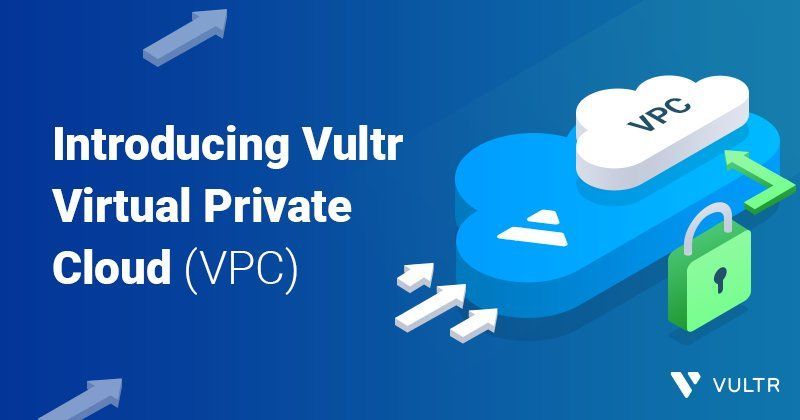Today we’re introducing Vultr Virtual Private Cloud (VPC), along with the beta of a feature allowing you to peer different VPC networks.
What’s a Virtual Private Cloud?
Cloud computing has transformed the way that businesses buy and use infrastructure. But one fundamental business need has not changed: it is critical that IT systems be secure, and that sensitive network communication be kept off the public internet. AWS popularized what it called the ‘Virtual Private Cloud’ (VPC) – a feature that allowed cloud resources to run within a private network, while still allowing elastic provisioning and de-provisioning of systems on-demand. Truth be told, Vultr has also offered this capability for years, but we’ve traditionally referred to it as ‘Private Networking’.
As we further evolve our functionality, we decided to embrace the common industry terminology. That’s why today, as we further enhance our capabilities, we’ve decided to rename ‘Private Networking’ to ‘Virtual Private Cloud’, or simply ‘VPC’. You’ll notice the change of terminology in our control panel, where we have also further simplified the user interface with which you can create a Virtual Private Cloud.

Over the coming weeks, we intend to further evolve our API to also adopt the new name.
Functionally, nothing changes for any of your existing Vultr systems. As before, all communication that happens within a Virtual Private Cloud is secure, super low-latency, and free of charge. Transfer within a VPC does not count at all towards any transfer quotas associated with your instances.
We are also pleased to announce the Beta of VPC Peering which provides connectivity for more complex application architectures.
There are many ways you might architect and operate modern web applications. While in many cases you might run all your systems within a single Virtual Private Cloud, in some situations you might conclude that it is best to split your application into multiple discrete components, each running in its own Virtual Private Cloud. For example, your development team might work with your publicly accessible web servers in one VPC, and your database administrator might operate your database in another VPC that is firewalled off from the public internet.
To accommodate complex scenarios such as these, we’re introducing
. With it, you can route traffic between VPCs as if they are in the same network, without the added risk of exposing traffic over the public internet. You can even peer VPCs between different Vultr accounts.

Read more in our documentation.
Get started with Vultr VPC today
Vultr customers can create, view, and peer Virtual Private Clouds within the Networking section of our control panel.
Should you try the new peering capability and have any feedback about your experience, please share with us by opening a support ticket.
Businesses interested in a consultation with any of our cloud computing experts should contact us.

